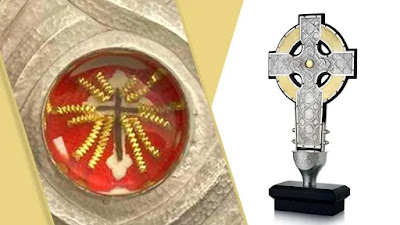Within a few days, King Charles III will be crowned in a momentous celebration watched all around the world. The religious aspect of it all is quite interesting, even from a Catholic perspective. To start, Pope Francis has sent two fragments of the true Cross on which Jesus was crucified. They are relics of inestimable value. They will be embedded in a silver processional cross specially made in Wales, and which will be carried in procession at the start of the Westminster Abbey ceremony on May 6. This is an extremely important and historic gift from Rome, a powerful moment in our history. The multi-faith ceremony is also going to be quite unique. Representatives of Britain’s Muslim, Sikh and Hindu people will be present in prominent seats and invited to greet the king, but the prayers, anointing and crowning will all certainly be specifically Christian and identical to those used in coronations of past centuries. Something that has been much overlooked is that anti-Catholic aspects of the ceremony, introduced in the 17th century, have now been abandoned. In 1901 when King Edward VII was crowned, he was obliged to repeat an oath specifically denouncing the doctrine of transubstantiation. He disliked it and deliberately spoke it in a very low voice so as not to hurt the feelings of his Catholic subjects. It was the last time the oath was used; with the next king, George V, it was abandoned. King Charles III will simply promise to uphold the teachings of the Church of England and will add something about defending religious freedom generally. And there will be formal Catholic participation in the service, most probably with the Cardinal-Archbishop of Westminster reading a prayer, as he did at the queen’s funeral last September.
Friday, 21 April 2023
King Charles’ Coronation
A detail of the cross fragments and the top part of the Processional Cross
Relics of the True Cross have long been treasured by
Christians around the world. According to legend, St. Helena, the mother of
Constantine, miraculously discovered the cross in 326. Pieces of the cross were
taken back to Rome and Constantinople. From there those pieces were further
divided and dispersed to other shrines and holy sites. The
cross will be made available for veneration to both the Anglican and Catholic
churches in Wales. Given
that many consider the pieces of the cross among the most precious relics in
all of Christendom, the Pope’s gift is being seen as an incredible ecumenical
sign of goodwill. The
Cross of Wales is made of Welsh slate, wood and silver. On it are inscribed the
Welsh words of St. David, patron saint of Wales: “Be joyful. Keep the faith. Do
the little things.” At the center, arranged into a tiny cross are the precious
shards of Christ’s cross.
Subscribe to:
Post Comments (Atom)


No comments:
Post a Comment